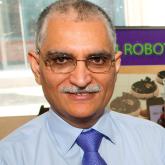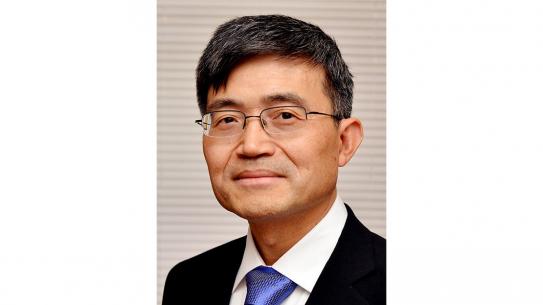Examining the effectiveness of a professional development program: Integration of educational robotics into science and mathematics curricula
This research was based on a program developed by Vikram Kapila, professor of mechanical and aerospace engineering.
Sparking interest in STEM education is a critical step toward creating a diverse workforce that can confer key advantages to any country in the global tech world. The number of US jobs required in STEM fields has increased nearly 34% over the past decade, but the number of students opting to pursue STEM as a major and career is declining. Many educators, researchers, and funding agencies have devoted significant efforts towards promoting students’ motivation and interests for learning and academic performance at all levels of STEM ecosystem to catalyze students’ entry on the pathways for STEM professions.
For students, robotics seems to be one of the best entryways to the field of engineering and STEM education in general. For example, students using a robot kit made by LEGO in a classroom can have a joyful and entertaining experience as they feel like playing with toys, which can encourage them to participate in robotic-based learning activities. Still, teachers can be reluctant. These programs can require specialized knowledge and teachers often do not have models or understanding of pedagogical approaches to implement technology-integrated courses, in general, and robotics-integrated courses, in particular.
A new study from Tandon researchers describes a professional development (PD) program designed to support middle school teachers in effectively integrating robotics in science and mathematics classrooms. The PD program encouraged the teachers to develop their own science and mathematics lessons, aligned with national standards, infused with robotic activities.
The study is based on a program developed by Vikram Kapila, Professor of Mechanical and Aerospace Engineering, and it involves Sonia Mary Chacko, a recent doctoral graduate from NYU Tandon. The lead author of the study, Hye Sun You, served as a research associate in the program and is now an Assistant Professor of Science Education at Arkansas Tech University. The study proposed that a multi-week summer PD and sustained academic year follow-up imparted to the teachers the technical knowledge and skills of robotics as well as an understanding of when and how to use robotics in science and mathematics teaching.
The 41 participants of study consisted of 20 mathematics and 20 science teachers and one teacher who teaches both subjects. Three instruments were administered to the teachers during the PD, and follow-up interviews were conducted to further examine benefits and possible impacts on their teaching resulting from the PD. The data were analyzed by both statistical and qualitative methods to identify the effectiveness of the PD.
This study found the technology integration of LEGO robotics tools has the potential to enhance teaching and learning, and that thoughtful PD programs and ongoing support for teachers can provide specific and practical ways to reduce the barrier to embedding technology in educational curricula. It is expected that the PD focused on improving teachers’ knowledge level, confidence, and attitudes towards technology helps teachers overcome barriers that make it difficult to integrate technology into their instruction and ultimately, transforms the performance of students by effective use of technology.
This work is supported in part by the National Science Foundation under ITEST grant DRL-1614085, RET 632 Site grant EEC-1542286, and DRK-12 grant DRL-1417769, and NY Space Grant Consortium grant 76156-10488.





